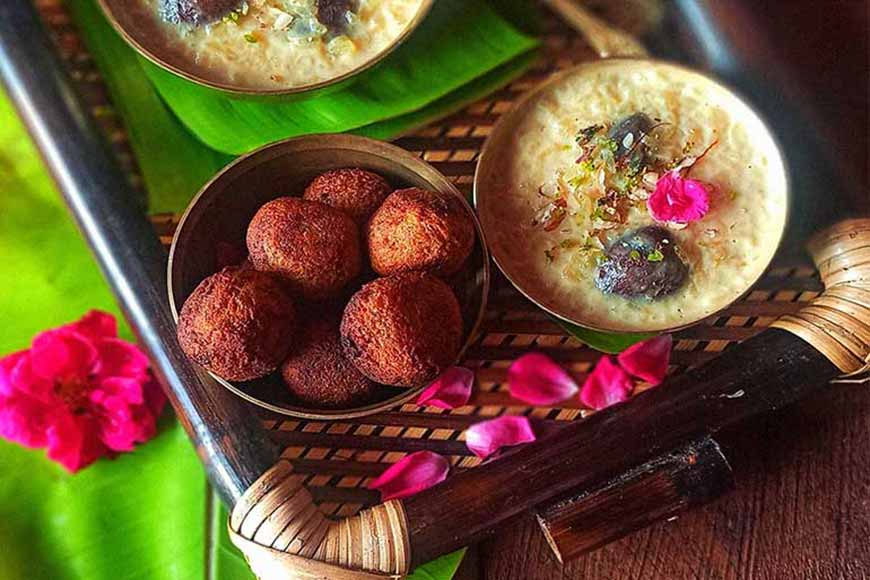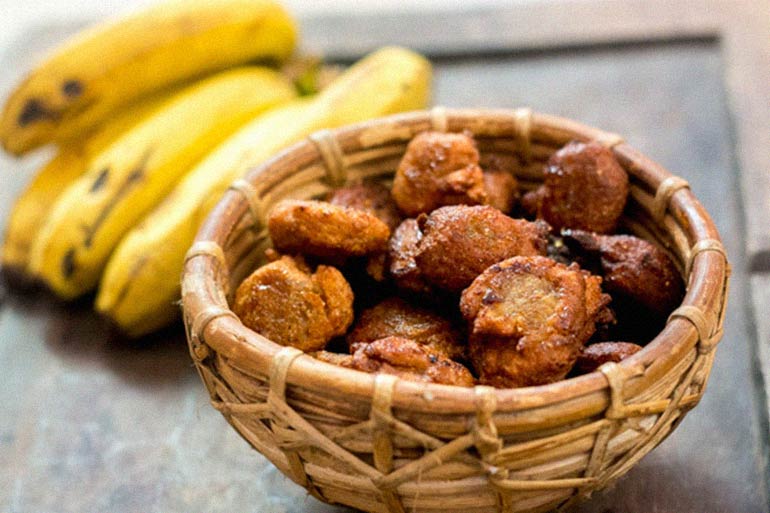Famous dessert from Shibpur’s heritage Roychowdhury Bari – Kadali Payesh

Kadali Payesh, an age-old dessert from Shibpur’s Roychowdhury Bari
Bengal has a rich history that dates back thousands of years. Not just known for its diverse and vibrant culture, literature, music, dance, and cinema, but also for its traditional Bengali cuisine, with its emphasis on fish, rice, and spices. Indeed, Bengal is famous for its ilish bhapa, chingri malaikari, kosha mangsho and so on, but do you know about the sumptuous Bengali desserts? The different kinds of drool-worthy desserts prepared by Bengalis also have historical significance. These sweet treats hold a special place in the hearts of Bengalis and are an integral part of their culinary tradition. The famous Bengali desserts are Rosogolla, Sandesh, Chomchom, Pantua, Mishti Doi, and so on. But among them maybe the most favourite dessert of everyone is Payesh, a sweet porridge made mostly of rice and milk. Payesh has a special path to a Bengali’s heart as it is intertwined with every good omen. While celebrating birthdays, Bengalis must make Payesh and the birthday boy or girl has to taste it first, before anybody else sipping even a spoonful! Whenever there is a first, such as the first job or first day of school, a spoonful of payesh is consumed for a good omen. For all these reasons payesh is also called “poromanno”, where “porom” means “the best” and “onno” means grains, mainly rice.
Shibpur’s Roychoudhury house in Howrah has an age-old recipe for such a Bengali dessert. In 1685, Durga Puja started in the Roychowdhury household of Shibpur, Howrah. The puja was started by Raja Rambrahma Roychowdhury. According to the family’s belief, Rambrahma had started the Puja after he received the order from the deity in his dream. This was actually Ma Chandi’s Puja. Though at present many other pujas have flourished in the area, the 300-year-old Puja of the Roychowdhury household is as famous as ever. The puja might not have the royal lustre anymore, but the traditions and discipline of the puja have been maintained by Biswanath Roychowdhury, a descendant of the Roychowdhury family. He is also the editor of “Sri Sri Durga-Kalimata Estate”. This puja of the Roychowdhury household was famous by the name “Shnaajher Atchala” in the locality. To visit the famous Puja of the Roychowdhury household, you have to reach Shibpur Bajar, from there go towards Mandirtala where you will find the Hindu Girl’s School. From there take the right and walk for a few minutes, there you will find the famous “Shnaajher Atchala.”
 Banana fritters are used to make the porridge
Banana fritters are used to make the porridge
On the day of Nabami (the ninth day of Durga puja), after the rituals are done, a feast is organised at the house. Among the vast range of veg and non-veg dishes offered to the deity, a special item known as the Banana Bora Payesh or Kadali Payeshanno is served. A recipe made by dipping the banana and coconut vada into the rice kheer or chaler payesh. This delicacy has been served as bhog or blessed food in every Durga puja for years. Here goes the recipe:
Ingredients required for the banana bora (balls):
Two ripe bananas
One cup of coconut shavings
½ cup jaggery
½ cup flour
Oil for frying
Ingredients required for Payesh
1.5 litres of milk
1/6th cup Gobindobhog rice
3 teaspoons of cashew
2 teaspoons of raisin
1/4th cup jaggery
2 cardamoms (powdered)
2 bay leaves
Recipe:
For banana vada
1. Heat the coconut shavings and jaggery in a pot for 7-8 minutes, then take it off the flame and let it cool.
2. Take the mixture and add it to a bowl of banana paste and flour. Stir well, add a little bit of water, and mix till it turns into a thick batter.
3. Heat the oil and carefully drop balls made out of the batter one by one. Fry until they turn golden brown. Once done, put it aside.
Banana Vada payesh
1. Soak the raisins in water.
2. Soak the rice in water for 15 minutes, then drain the water and keep the dry rice aside.
3. Heat the milk on medium flame, add bay leaf and cardamom powder, and cook for 15 to 20 minutes.
4. Add the rice to the milk, stirring over medium heat, until the rice is steamed properly.
5. Add cashews and raisins and keep stirring the milk. Leave for 8 to 10 minutes until the mixture thickens.
6. Put the fried banana balls into the mixture and leave for two minutes.
7. Turn off the heat and add grated jaggery, then stir until it completely dissolves in the milk. Serve once cooled.









